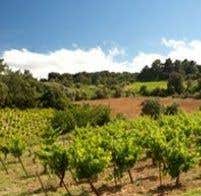From £5.99
Alain Grignon is the name of one of the founding partners of LGI, one of the most successful suppliers of Languedoc wines to big British retailers. My fellow Master of Wine Mark Linton was another, though he is no longer involved. They have played a major part in keeping Majestic in particular supplied with its inexpensive southern French offerings and, to judge from their website, they are now turning serious attention to the Chinese market.
retailers. My fellow Master of Wine Mark Linton was another, though he is no longer involved. They have played a major part in keeping Majestic in particular supplied with its inexpensive southern French offerings and, to judge from their website, they are now turning serious attention to the Chinese market.
I have been tasting a number of Carignans recently in order to choose a couple to recommend in an article planned for Decanter magazine in conjunction with our forthcoming book Wine Grapes. The major restriction on all my recommendations was that they had to be in commercial circulation in the UK.
I was very pleased to see that the admirable Lea & Sandeman list the smart Sardinian Barrua, the joint venture between the producer of Sassicaia and the Santadi co-op, for southern Sardinia has some of the finest Carignan vines in the world, in my opinion. But I found the current vintage, the 2008, was just a little too earthy, rustic and drought-baked to my taste. It's also 15% alcohol.
I looked at my notes on Priorat, of course, and found one or two dominated by old Carignan vines that were stunning – if extremely expensive. I also tasted one or two wines from the old Carignan vines in Chile's Maule region but couldn't find one that quite fitted the bill – especially in terms of availability, for these hand-made wines tend to be made in only the smallest of quantities.
Then I noticed that I'd been sent a sample of the screwcapped, thoroughly commercial Alain Grignon, Carignan Vieilles Vignes 2011 IGP Pays de l'Hérault and thought I'd try it. And although it can be bought for as little as £5.99 from Majestic in the UK (provided two bottles are bought), I was really very impressed. The nose is very slightly baked à la Barrua, but in this case it is backed up by sweet, charming fruit with a hint of strawberries and lots of fluidity on the palate. I don't think it is worth ageing, but its warmth is clearly due to the excellent, even 2011 growing season rather than to sheer alcohol. (It's only 12.5% alcohol.)
The fruit is sourced from vines around the village of Cruzy, sort of medium altitude in the western Hérault north of Narbonne, and – this is the secret – the vines are 50 years old. So much Languedoc Carignan imparts a sort of shrill rawness to blends. The variety is famously prolific, especially in youth, and the appellation regulations in Languedoc and Roussillon carefully limit the proportions of Carignan in wines such as Corbières, Minervois, St-Chinian and Faugères. But old Carignan vines can deliver real quality – and value, as evinced by this wine.
It's a soft enough red to be drinkable without food. (Incidentally, I see from Richard's tasting note on the 2009 vintage of this wine that Majestic were offering a similar reduction if two bottles were bought, bringing the per bottle price down not to £5.99 but to £4.99. That sounds about par for the course. Successive duty increases have played a major part in adding a pound to many of the wines that used to sell for £4.99 in the UK.)
If the idea of buying wine from a large-volume producer does not appeal to you (yes, I did notice how few people seemed to be interested in my Gallo Moscato…), I can thoroughly recommend Ch de Combebelle 2010 St-Chinian. I tasted this sophisticated, high-altitude blend of Syrah and Grenache (no Carignan on this label, thank you very much) alongside the 2009 and very much preferred the transparency of the younger vintage. The 2009, from a much more torrid vintage, was a bit tough, sunbaked and gritty whereas this 2010 is already drinking beautifully. See their website for availability.

